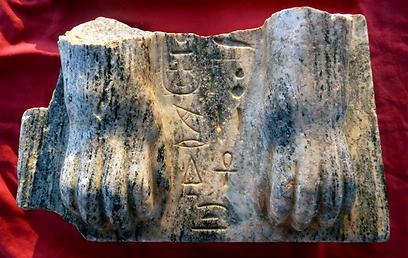VIDEO – Archaeologists in Israel have unearthed a fragment of an ancient sphinx belonging to a pyramid-building pharaoh who is believed to have lived more than 4,000 years ago.
The incredible find bears a striking resemblance to such sculptures in Egypt, even bearing the name of an ancient Egyptian king.
Video courtesy of jn1.tv
"What we found in the last day of the last season, as usually happens in archaeological excavations, is one of the most unique finds in Israel in terms of the archaeology of the Levant," says Dr. Sharon Zuckerman, a lecturer at Hebrew University.
Zuckerman says the next step was to try to understand how the Sphinx appeared at the Tel Hazor National Park, north of the Sea of Galilee, and to find the rest of the body.
"What we are trying to understand is, first of all, how this Sphinx arrived here and, second of all, and this is the most interesting question, is where is the rest of the statue.
"The statue originally was about more than 1.5 meters (5 feet) long – it was really a monumental statue – so where is its head? Where is its body? We hope we will be able to find it in our excavation of the palace."

(Photo courtesy of archaeologists Prof. Amnon Ben-Tor and Dr. Sharon Zuckerman)
It's thought that the sphinx could have arrived either around the beginning of the second century BCE by one of the Canaanite kings who ruled Egypt or after it was sent to the king of Hazor by an Egyptian king in the 14th century BCE, a thousand years after it was engraved.
"This is the only find bearing his name in Egypt and in the Levant, in the Levantine area, so this makes it a very unique find," says Dr. Zuckerman. "The sphinx itself bears inscriptions. It bears the name of the King Mycerinus, or Menkaure, and tells us about the location of the Sphinx originally, which was in one of the temples of the sun God in Heliopolis, a city in Egypt itself."
The sphinx piece was discovered during an excavation in Tel Hazor. Scientists hope they can locate the rest of the sphinx body in further excavations, although some have suggested that the rest of the statue may have intentionally been broken and thrown away.















